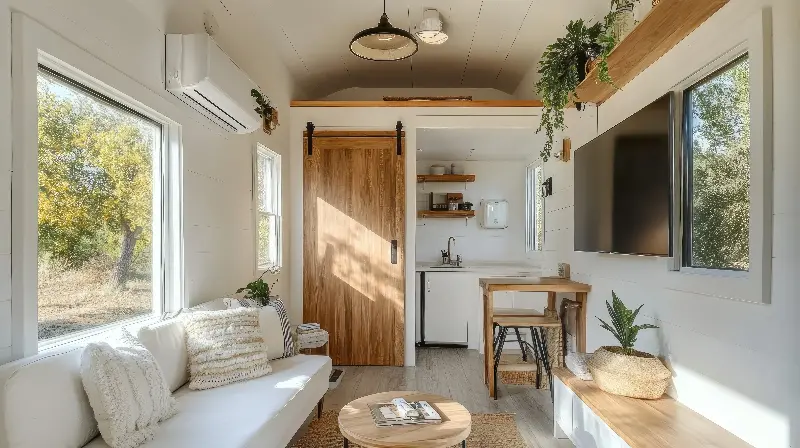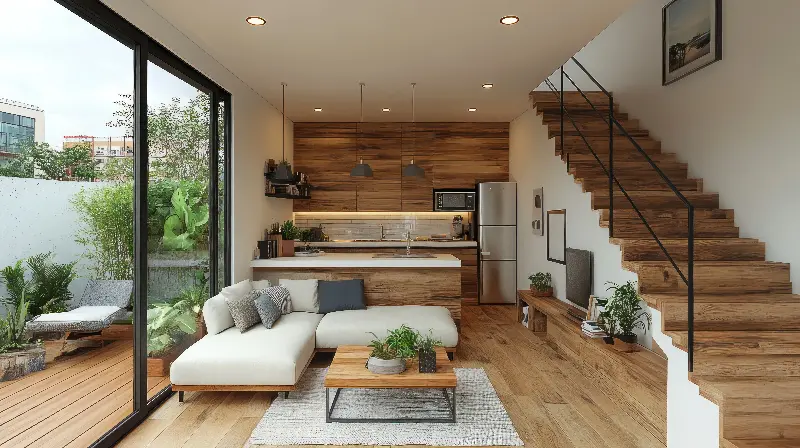Nestled in sleepy landscapes or tucked away in bustling cities, tiny homes are capturing imaginations around the globe. What started as a counterculture trend has blossomed into a full-blown lifestyle movement. The idea is simple but powerful: living with less can give you more—more freedom, more savings, and a lighter footprint on the planet. This wave of minimalist living is not only transforming housing trends but also challenging our conceptions of what it means to live well.

Origins Of The Tiny Home Phenomenon
The roots of the modern tiny house movement stretch back to the late 20th century. Spurred by environmental concerns, economic pressures, and a yearning for simplicity, innovators began to design structures that prioritised function over excess. Whereas the American dream once meant “bigger is better”, tiny home advocates flipped this notion on its head. The financial crash of 2008 further fuelled interest, as individuals sought affordable and sustainable alternatives to traditional housing.
Many trace inspiration to pioneers like Jay Shafer, whose 96-square-foot house sparked a movement. Yet the minimalist ethos goes even further back, echoing philosophies from Thoreau’s time at Walden Pond to the efficient, compact homes of post-war Europe and Japan.
Meeting Modern Needs With Less
Today’s tiny homes come in all shapes and sizes, from cleverly converted shipping containers and sleek pre-fab pods, to whimsical cottages on wheels. What unites them is the principle of living efficiently, using every inch wisely. These homes can range from a snug 60 square feet up to 400 square feet, forcing residents to prioritise experiences and relationships over possessions.
Minimalist living doesn’t just save on space. It dramatically reduces costs—tiny house owners typically report lower utility bills, negligible or zero mortgages, and less time spent on cleaning and repairs. The homes are often mobile, making relocating an adventure rather than a headache. For many, the ability to live debt-free and invest in passions such as travel, learning, or entrepreneurship is a game-changer.

Sustainability At The Forefront
The environmental impact of housing is a growing concern worldwide, and tiny homes are making a significant difference. These diminutive dwellings use fewer materials to build and require less energy to heat and cool. Many owners choose eco-friendly features such as solar panels, composting toilets, rainwater harvesting, and greywater recycling.
According to a study conducted by the Journal of Industrial Ecology, the average tiny home reduces a household’s ecological footprint by as much as 45 percent. With growing anxiety about climate change and resource scarcity, this appeal is stronger than ever—particularly among Millennials and Gen Z.
Downsizing Without Downgrading
Perhaps surprisingly, many who embrace tiny house living report increased happiness and wellbeing. By shedding clutter, residents often rediscover what truly matters. Studies show a link between owning fewer possessions and lower stress levels. The allure of custom design is also hard to resist—tiny houses are often beautifully crafted, filled with clever storage solutions, multi-functional furniture, and panoramic windows.
There is a sense of empowerment, too, in building and maintaining your own home. Countless couples and individuals chronicle their journeys online, revealing the joys and challenges of constructing a bespoke space that reflects their values and style. Minimalist living, it turns out, is not about deprivation—it is about making room for life.
A Global Movement, Locally Crafted
While the movement’s poster homes might be found on Instagram feeds from Oregon to New Zealand, tiny houses are cropping up in cities and rural areas across every continent. Architects and builders in Tokyo are known for “kyosho jutaku”—micro-homes designed for urban density. Europeans experiment with eco-villages built from repurposed materials, while Australians pioneer off-grid luxury in their outback.
In the UK, where property prices make traditional homeownership elusive for younger generations, tiny house communities are appearing in both city fringes and remote countryside. These hubs foster a sense of camaraderie and resource-sharing, echoing the co-housing models popular in Scandinavia.
Changing Mindsets, Shaping The Future
Tiny homes are not just an architectural trend; they reflect a shift in mindset. As more people seek balance, flexibility, and sustainability, the draw of minimalist living continues to grow. There’s an undeniable romance to it—the idea of packing up your home and chasing new horizons, or cultivating a cosy retreat that holds only what you cherish most.
Yet, tiny house living is not without its challenges. Zoning restrictions, limited space for families, and the need for creative storage can deter some. Still, the movement has ignited conversations about what makes a house a home, and how much space we really need to thrive.
As cities grapple with housing shortages and individuals feel the pinch of living costs, tiny homes may offer a refreshing solution, blending pragmatism with a reinvigorated sense of possibility.
In a world where 'having it all' is being redefined, tiny homes demonstrate that big dreams can, indeed, live in small spaces. Whether as a stepping stone, a permanent lifestyle, or simply an inspiring idea, the journey toward less is inviting more people than ever to reimagine their own ideal sanctuary.
